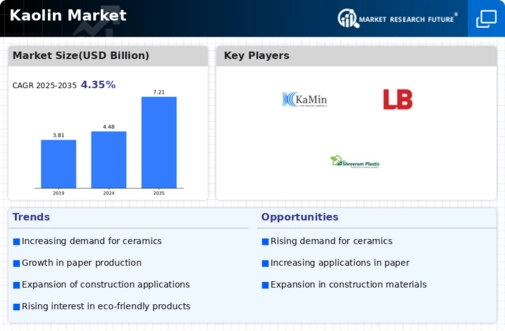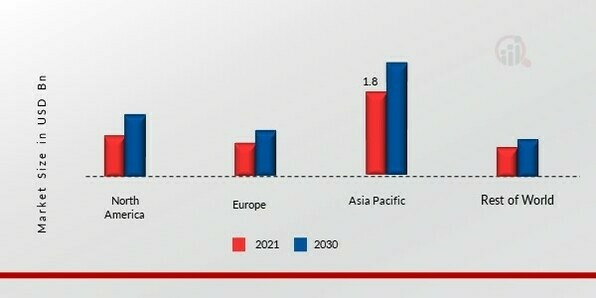Rising kaolin demand in the paper sector and expanding kaolin application in pharmaceutical will boost the market growth
As a coating ingredient that offers excellent whiteness and enhances the look of finished paper products, kaolin is used more often in the paper industry. Around 1.9 million tonnes of kaolin were estimated to have been exported from the United States in 2021, with substantial amounts going to Mexico, Japan, and China. This kaolin was mostly used for paper coating and filling. Among the top nations that produce paper are China and Japan. Kaolin is used as a paper filler to lengthen the fiber and increases the printability of paper in addition to gloss, smoothness, and brightness.
These are a few main variables fueling the anticipated expansion of the kaolin market's revenue.
Kaolin is utilized in PET and polyethylene films as an infrared absorber, allowing for the use of an additive for laser-mark molded packaging. By eliminating harmful ions from the polymer matrix, meta kaolinite can increase the resistivity of PVC cables. In coupling processes, hydroxyl groups on the calcined kaolin surface enhance the heat resistance and impact strength of polyamide. The electrical and polymer sectors are predicted to employ chemicals more often. Kaolin is a filler used in fiberglass to reinforce interwoven fibers.
Additionally, it makes it possible to incorporate fibers into goods that need their plastic to be strengthened, such as boats, cars, aerospace, and aviation products, sporting and recreational goods, insulation made of fiberglass, tanks, and pipes made of fiberglass, circuit board manufacturing, fiberglass air filters, and fiberglass building. The chemical makeup of the fiber, the makeup and characteristics of its surface, and the textile structure of the reinforcing system all affect the kaolin concentration in the binder.
KaMin was established by I-Minerals Partners (an owner). In November, BASF entered into an agreement with the company. The deal entailed the purchase by KaMin of BASF’s Performance Chemicals division’s segment, which is dealing with kaolin minerals presently.
In India, Nirma Ltd. has announced its plans to increase investment in capacity expansion in the production of kaolin in 2023. It was meant to help meet the rising demand from the different industries as well as strengthen its position across them.
Hawkins, Inc., a leading specialty chemical provider, diversified its kaolin product mix in 2023 by introducing new formulations tailored to meet industry-specific needs. The firm concentrated on improving the performance characteristics of its high-quality kaolins so as to broaden its market offerings.
Tata Chemicals Ltd. said it will expand its Kerala facility’s kaolin production capacity in 2021. This followed increased demand for kaolin across various sectors, such as ceramics, paints, and coatings.
Kaolin's usage as a pesticide in suspension form in agriculture has grown due to its anti-microbial and insecticidal characteristics. Kaolin and Kaolin-pectin formulations used to treat small animals for diarrhea and blood loss are classified by the US EPA under inert materials and livestock medications manufactured from these substances. Kaolin is used as a processing aid in the apiculture industry to extract propolis, a substance resembling resin with therapeutic and anti-microbial qualities. In the upcoming years, stable expansion in the agriculture and apiculture industries would significantly raise demand for kaolin.
The clay mineral has several uses in the pharmaceutical business, where it is a vital component of toothpaste, surgical pads, mouthwash, and other pharmaceutical goods. People with mouth sores use mouthwashes with kaolin as the ingredient because they offer a protective covering within the mouth. It is a widely utilized blood coagulant activator for reducing inflammation and avoiding thrombosis. Additionally, it is utilized as a hemostatic agent in gauzes and surgical pads and clinical laboratory tests to assess Activated Clotting Time (ACT).
Between 2022 and 2030, an increase in incidents involving blood loss is anticipated to enhance the use of kaolin-based dressing materials in hospitals and clinics and propel the Kaolin market revenue.
The global kaolin market appears to be experiencing a robust demand driven by its diverse applications in ceramics, paper, and plastics, suggesting a positive trajectory for future growth.
U.S. Geological Survey





